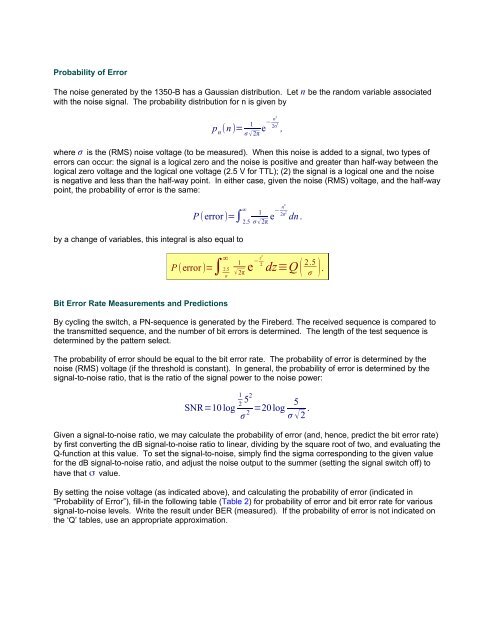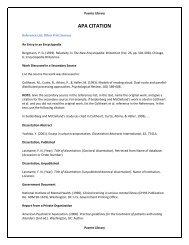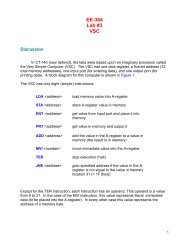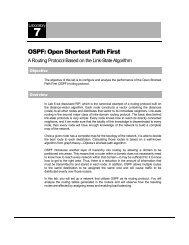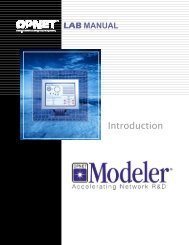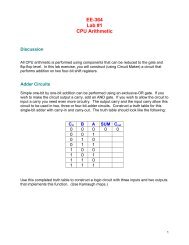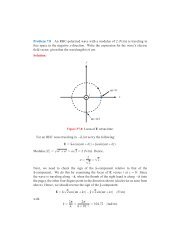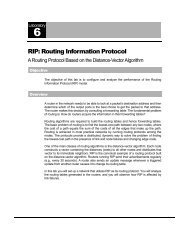EE-461 Lab #3 Digital Communications Systems - Capitol College ...
EE-461 Lab #3 Digital Communications Systems - Capitol College ...
EE-461 Lab #3 Digital Communications Systems - Capitol College ...
You also want an ePaper? Increase the reach of your titles
YUMPU automatically turns print PDFs into web optimized ePapers that Google loves.
Probability of ErrorThe noise generated by the 1350-B has a Gaussian distribution. Let n be the random variable associatedwith the noise signal. The probability distribution for n is given byp n(n )= 1n22σe− 2 ,σ √2πwhere σ is the (RMS) noise voltage (to be measured). When this noise is added to a signal, two types oferrors can occur: the signal is a logical zero and the noise is positive and greater than half-way between thelogical zero voltage and the logical one voltage (2.5 V for TTL); (2) the signal is a logical one and the noiseis negative and less than the half-way point. In either case, given the noise (RMS) voltage, and the half-waypoint, the probability of error is the same:∞P (error)=∫ 2.5by a change of variables, this integral is also equal toP (error )=∫ 2.5σ∞ 1√2πn21 2σe− 2 dn.σ √2πe−z22 dz≡Q ( 2.5σ ).Bit Error Rate Measurements and PredictionsBy cycling the switch, a PN-sequence is generated by the Fireberd. The received sequence is compared tothe transmitted sequence, and the number of bit errors is determined. The length of the test sequence isdetermined by the pattern select.The probability of error should be equal to the bit error rate. The probability of error is determined by thenoise (RMS) voltage (if the threshold is constant). In general, the probability of error is determined by thesignal-to-noise ratio, that is the ratio of the signal power to the noise power:SNR=10 log12 52σ 2 =20log 5σ √2 .Given a signal-to-noise ratio, we may calculate the probability of error (and, hence, predict the bit error rate)by first converting the dB signal-to-noise ratio to linear, dividing by the square root of two, and evaluating theQ-function at this value. To set the signal-to-noise, simply find the sigma corresponding to the given valuefor the dB signal-to-noise ratio, and adjust the noise output to the summer (setting the signal switch off) tohave that σ value.By setting the noise voltage (as indicated above), and calculating the probability of error (indicated in“Probability of Error”), fill-in the following table (Table 2) for probability of error and bit error rate for varioussignal-to-noise levels. Write the result under BER (measured). If the probability of error is not indicated onthe ‘Q’ tables, use an appropriate approximation.


